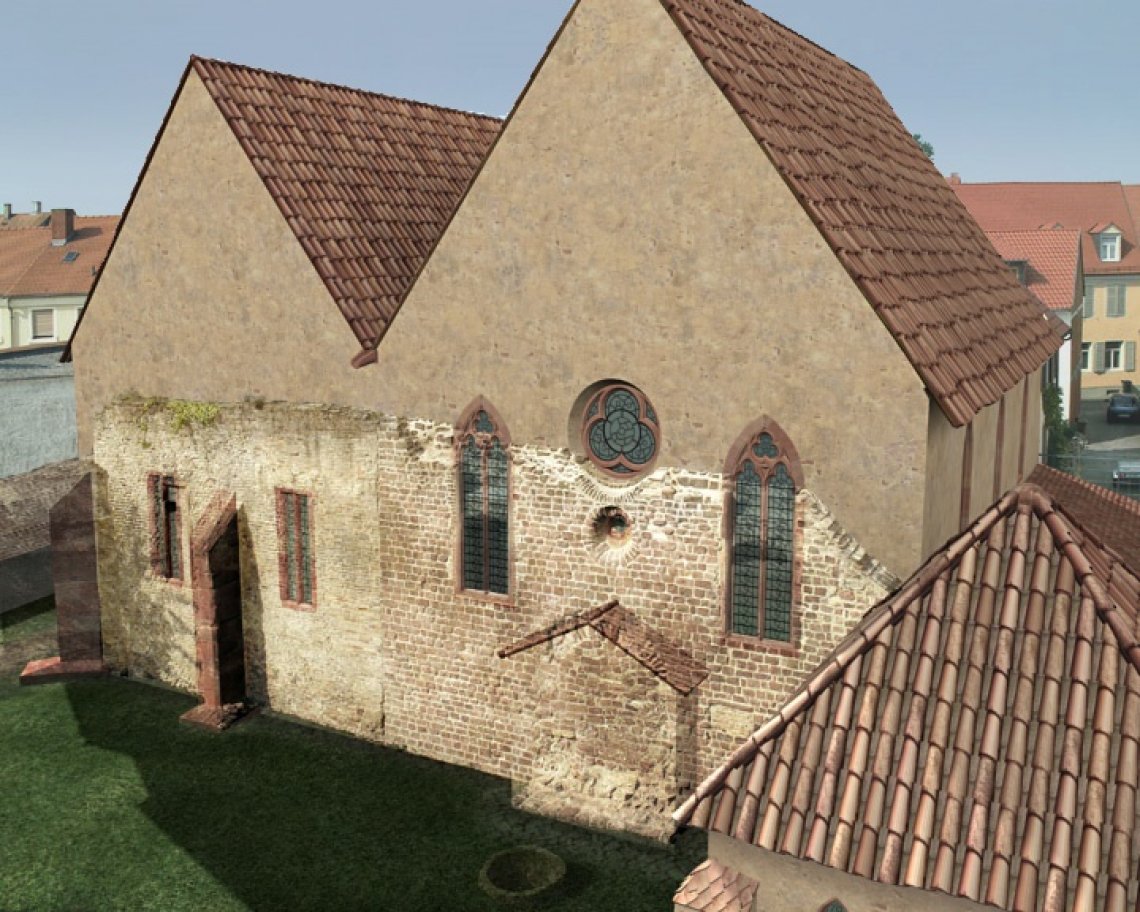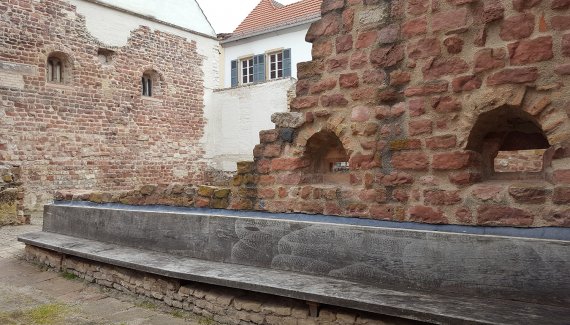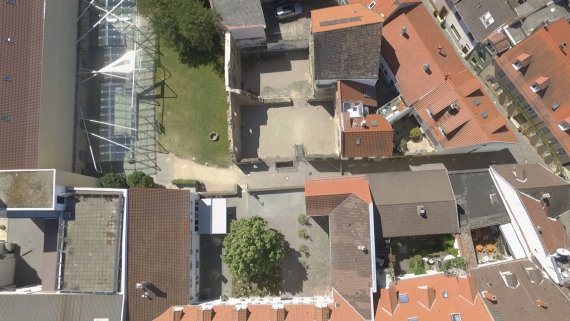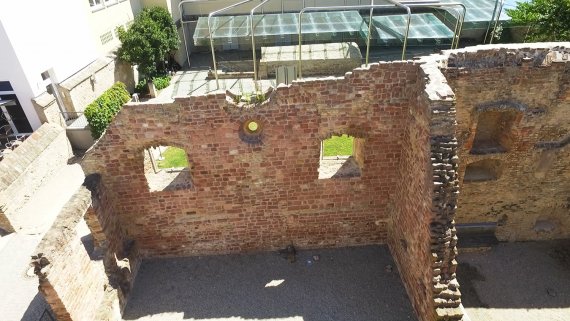Speyer
Jewry Court
In the center of the former Jewish quarter (»Judenhof«), a monumental mikveh from around 1120 is preserved. The impressive ritual bath is the oldest remaining of this kind in Europe. The mikveh and its facilities were a central location for the Jews in Speyer until its dissolution in the first third of the 16th century.
Going down into the mikveh is like travelling into the history of ShPIRA, starting with a long staircase, through a Romanesque portal, an anteroom, surrounded by a dressing room with stone benches, another vestibule and finally, down a few steps, to the water for immersion. It was the first monumental mikveh of this kind in Europe. It served, as well as the one in Worms, not only for the ritual purification but it shows also some choreography of ritual cleansing. This mirrors the value of this ritual, in particular after the Crusades destructions.
On the further area around the mikveh are the secured remains of the synagogue built in 1104 and the women's shul. It dates back to the middle of the 13th century. The community in Speyer followed Worms where the first ever-known women's shul was built. There are small breakthroughs in the wall to the synagogue for listening to the services and also a stone bench on which the women sat. The mikveh and the remains of the synagogues are in the center of the application to UNESCO with regard to Speyer.
An archaeological site is the yeshiva, its foundations were excavated in 1997/98. The construction of the yeshiva dates back to the first half of the 14th century. The west side of the teaching room was built on the east wall of the synagogue courtyard. As an annex to the synagogue, the yeshiva illustrates the importance of religious learning and teaching in Judaism. The building has been preserved as an archaeological site and its shape can be seen on the rising eastern wall of the synagogue and the surrounding wall of today's Judenhof area.
The remains of the whole complex allows conclusions on various changes; e.g. as a result of the pogroms of 1196 and 1349 and subsequent rebuilding. After the decline of the Jewish Community in the 15th century and its dissolution and emigration, the synagogue was used by the city after 1529. The synagogues were then used as an arsenal, the walls of the yeshiva was partially demolished.
The Shoah put an end to the small community founded at the end of the 18th century. In the mid-1990s, a new community formed; In 2011, a converted church was inaugurated as a synagogue (http://www.jkgrp.de/)
The mikveh and the synagogue's remains are the core monuments in Speyer when applying for World Heritage Status for ShUM. There have been excavations since the 1960’s; ever since then the Jewish heritage has been continuously saved and preserved. In 2010 the SchPIRA Museum opened at the entrance to the »Judenhof«. There, relics and excavation results from the prime era of Jewish medieval history are displayed, as well as gravestones from the 12th to the 15th centuries. By way of the gravestones, visitors come closer to past individuals from the community, and in this way can get an impression of the individuals from this Jewish Community. Following expulsion and pogroms, these gravestones were first stolen from the destroyed and abandoned cemetery, and then installed again, in bridges and stairs. A few of these were discovered during construction work in the 19th and 20th centuries. Despite their beauty - these remains in the museum will be inserted into the UNESCO-application only within the context of the monuments.




